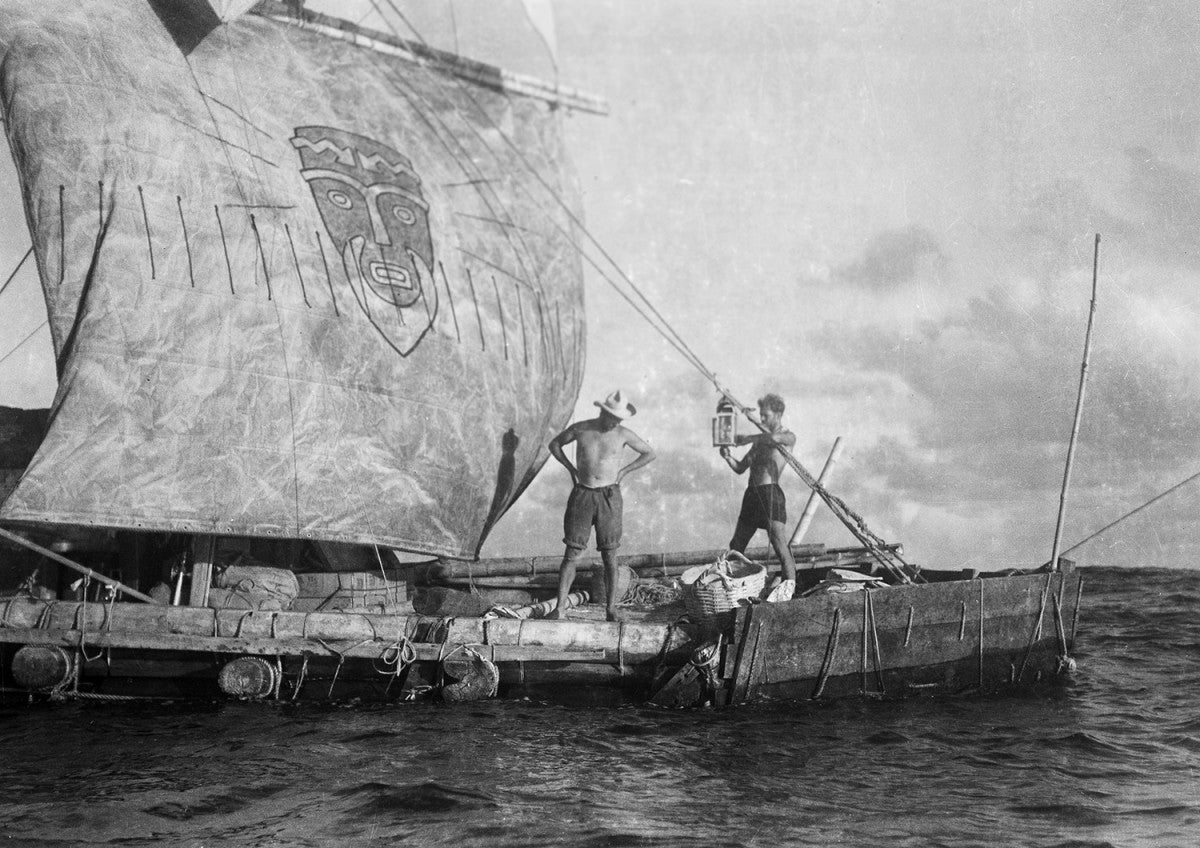Dreaming of the past, when our forefathers sailed across unknown waters using only the stars for navigation and whose craft was flimsy in comparison to modern mechanical wonders, brings a unique sense of excitement. Beyond imagination, however, a few courageous people have made it their goal to personally go on these antiquated odysseys.
Let’s explore the most popular recreations of historical expeditions.
Kon-Tiki
Among these contemporary retellings, Thor Heyerdahl’s Kon-Tiki trip from 1947 is arguably the most well-known. Heyerdahl and his team sailed from Peru on a balsa wood raft in an effort to demonstrate that early South Americans could have colonized Polynesia by sea. This was a planned risk, not just conjecture.
The group proved that early sailors could actually cross the Pacific by drifting about 7000 kilometers over 101 days. It was a story that combined adventure, anthropology, and chutzpah to capture the post-war imagination. The fact that Heyerdahl’s raft, the Kon-Tiki, was constructed with nothing more complex than logs and ropes is what makes it so compelling. He showed that uncovering old mysteries doesn’t always require the use of contemporary technology.
The incident influenced a 2012 historical drama film with the same title.
Mayflower II
The Mayflower II was a full-scale replica of the ship that carried the Pilgrims to America in 1620. In 1957, this reimagined vessel made the same perilous journey across the Atlantic, a tribute to the courage of those early settlers. The ship was built in Devon, England, with the aim of celebrating Anglo-American friendship after World War II.
The struggle of negotiating both 17th-century and 20th-century bureaucracy is what makes this voyage so fascinating, in addition to its accurate recreation of the Mayflower. During a time of post-conflict reconstruction and changing international dominance, the journey acted as a poignant reminder of our common past and resilience.
Mayflower II still sits in Plymouth, Massachusetts, where it serves as a museum ship, allowing visitors to walk the deck of this historical replica.
Operation Drake
Operation Drake, which took its name from Sir Francis Drake’s circumnavigation of the 16th century, was an educational endeavor in addition to a voyage. A varied group of young people took the schooner Eye of the Wind and sailed around the world for two years, partially following Drake’s path. The objective? To inspire a new generation of explorers by offering adventure, chances for scientific inquiry, and cross-cultural interaction.
This expedition was remarkable for its integration of teaching, exploration, and diplomacy in addition to its historical reproduction. Along the journey, they engaged with communities and carried out scientific study, illuminating the increasingly globalized world that Sir Francis Drake could not have predicted.
Vital Alsar’s Pacific Raft Expeditions
The goal of Vital Alsar’s Pacific Raft missions was to connect with the marine explorers of pre-Columbian times. His first raft, La Balsa, sailed for Australia in 1970 after setting out from Ecuador, covering a distance of 13,000 kilometers. Alsar set out to demonstrate the resilience of the human spirit, which was not just a scientific but also a philosophical goal.
With three rafts (Las Balsas) and a larger crew, he repeated the feat in 1973 and made the journey without incident. Alsar saw the voyage as both a modest indictment of the over-reliance on technology in our society and a monument to the ability of prehistoric navigators.
Abora
The ancient Egyptians and Mesopotamian seamen served as inspiration for Dominique Görlitz’s Abora excursions. Görlitz’s goal was to demonstrate that long-distance travel on reed boats—the kind that are often seen in ancient artwork—may have been a means of communication between ancient societies.
A bundle of reeds and an ambitious heart were all that the Abora III needed to make the crossing from New York to the Azores in 2007. Storms, leaks, and the constant fear of capsizing were among the difficulties the crew encountered, reflecting the brittleness of the historic ships.
Like Heyerdahl before him, Görlitz aimed to deepen our knowledge of possible cross-oceanic connections between ancient peoples. If vessels built like those of the ancient Egyptians could span the Atlantic, maybe our conceptions of the first cross-cultural interactions are much too narrow.
They employed a conventional steering mechanism with a tiller that was fashioned after ancient hieroglyphs because, if you’re going to do anything, you may as well do it well.










